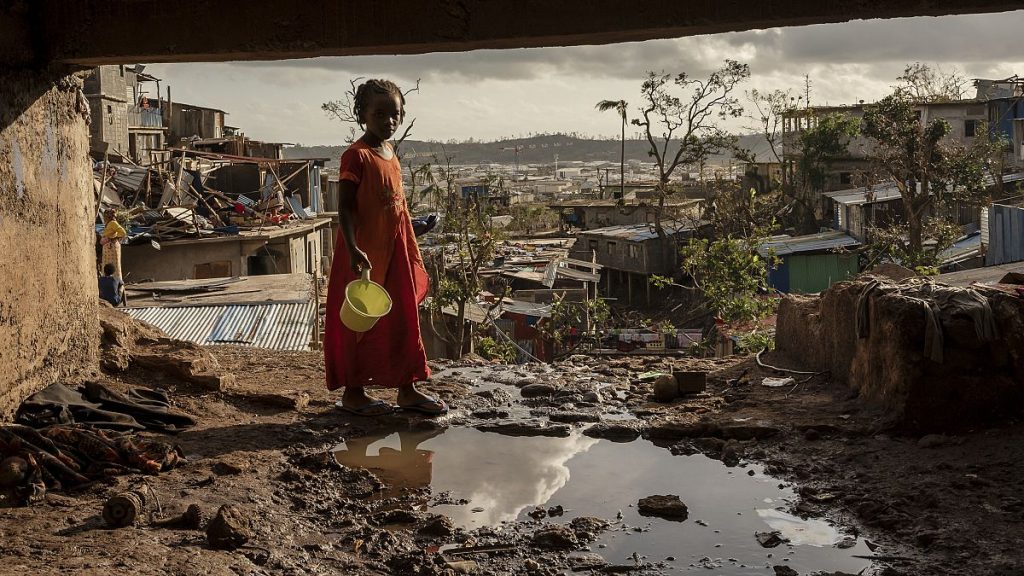The French territory of Mayotte, still reeling from the devastating impact of Cyclone Chido just a month prior, found itself bracing for yet another powerful storm. Cyclone Dikeledi, having already made landfall in northern Madagascar, set its sights on the small archipelago, prompting a red alert and a flurry of preparations to protect the vulnerable population. The impending storm, although predicted to weaken slightly before reaching Mayotte, still carried the threat of strong winds and torrential rain, raising concerns about further damage and potential mudslides in the already battered landscape.
The memory of Cyclone Chido, the worst tropical storm to hit Mayotte in nearly a century, was still fresh in the minds of the islanders. The previous cyclone had left a trail of destruction, flattening entire neighborhoods and claiming the lives of at least 39 people, with fears that the final death toll could be significantly higher. Thousands more were injured, and the precarious shantytowns that housed many of the island’s residents, including a large migrant population, bore the brunt of the storm’s fury. Chido’s devastating path extended beyond Mayotte, causing further fatalities and widespread damage in Mozambique and Malawi as it moved across mainland Africa.
As Dikeledi approached, emergency personnel and law enforcement agencies were placed on high alert, working tirelessly to implement protective measures for the islanders. The French Interior Ministry emphasized the commitment to safeguarding the population, even as the meteorological department, Meteo, predicted that the cyclone’s path would likely take it approximately 75 kilometers south of Mayotte. However, even with this slightly altered trajectory, wind gusts were still expected to reach up to 110 kilometers per hour, posing a significant threat to the already weakened infrastructure and fragile communities.
Mayotte, France’s poorest department, faced a daunting challenge in recovering from the successive blows of these powerful cyclones. The island’s dense population of over 320,000, coupled with an estimated 100,000 migrants, many living in informal settlements, created a complex and vulnerable environment. The impact of Chido had exposed the fragility of the island’s infrastructure and the precarious living conditions of many of its inhabitants. The impending arrival of Dikeledi threatened to exacerbate these existing vulnerabilities and further hinder the already challenging recovery efforts.
The southwestern Indian Ocean, where Mayotte is located, experiences its cyclone season from November to April. In recent years, the region has been repeatedly pummeled by a series of intense storms, highlighting the increasing frequency and intensity of extreme weather events. The most catastrophic of these was Cyclone Idai in 2019, which caused widespread devastation and loss of life across multiple countries, including Madagascar, Mozambique, Malawi, and Zimbabwe. The collective impact of these storms underscored the urgent need for improved disaster preparedness and resilience-building measures in the region.
While Cyclone Dikeledi was not anticipated to reach the same level of intensity as Chido, the cumulative impact of these successive storms posed a significant threat to Mayotte’s recovery and long-term stability. The heavy rainfall associated with Dikeledi raised concerns about further damage to infrastructure, displacement of communities, and the increased risk of mudslides in the already saturated ground. The already strained resources of the island were stretched further as authorities prepared for the approaching storm, emphasizing the critical need for continued support and assistance from the international community in the aftermath of these devastating weather events.










